The average hydroseeding cost is $0.07 to $0.22 per square foot, and while it’s a more expensive planting method than traditional seeding, it’s more cost-effective than sodding. Learn more about what it is, the benefits, and the factors influencing the cost of hydroseeding.
What is Hydroseeding?
Hydroseeding is a method of planting seeds, usually for lawns. Specifically, it’s a process wherein you spray in place a mixture of water and fertilizer. Hydroseeding, or hydroturfing, usually includes a mulch product and a tackifier, which keeps the seed in place and protects it.
The Hydroseeding Process
How does hydroseeding work? Learn about the ingredients used in hydroseeding and how you apply them.
Ingredients of the mixture
Landscapers typically use hydroseeding to stabilize those areas that road and building construction have disturbed. It’s also an effective method of planting new lawns.
The hydroseeding mixture includes everything the newly planted seeds need to grow, including fertilizer. In addition, it contains a cellulose mulch product made of wood or paper fibers.
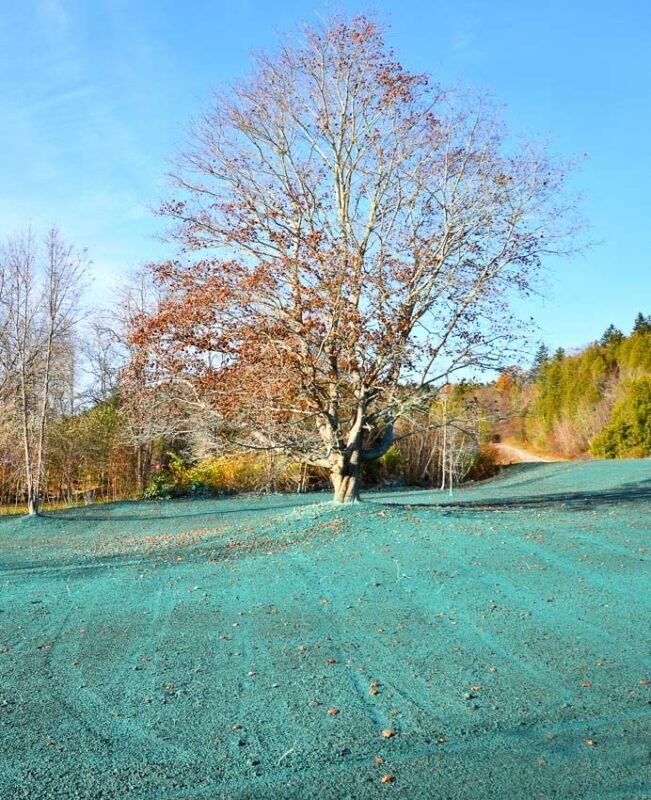
A polymer stabilizing emulsion goes into the slurry, binding the seed, fertilizer, and mulch to the soil. This holds it all together until you have established vegetation.
Finally, a green dye often goes into the mixture to make the solution visible. This helps the hydroseeder see where he’s already sprayed.
Application techniques
Hydroseeding machines are large pieces of equipment with tanks, hoses, and pumps. The hydroseed mixture is sprayed from the nozzle onto the ground using high pressure that can reach long distances.
Benefits of Hydroseeding
Here are the benefits of hydroseeding compared to sod and other seeding and lawn planting methods.
Rapid lawn growth
Hydroseeded lawns grow faster than traditional seeded plantings because the seed is protected by mulch, and it has the fertilizer it needs for quick greening.
Better Germination
The mulch holds moisture, so seeds not only germinate faster, but you’ll also get a better germination rate.
Longer Planting Window
Compared to dry seeding, you have a longer window to plant when you’re hydroseeding. Since the mulch protects the seeds before and after they germinate, you can plant during dryer times of the year.
Erosion control
The stabilizing tackifier used in the hydroseeding mixture helps control erosion, keeping the seeds from washing away. This makes it the best choice for steep slopes and hillsides.
Hydroseeding vs. Hydromulching
The terms “hydroseeding” and “hydromulching” often mean the same thing, but there are some subtle differences.
Key Differences: Comparing the Ingredients
In hydroseeding, you can use a mixture of seeds, water, and fertilizer with or without the mulch product. People frequently use hydroseeding to help stabilize the seed. Meanwhile, the dye and tackifier help keep it in place and make it visible during the application process.
With hydromulching, you don’t always use seeds. In some applications, such as forestry management after wildfires, hydro mulch helps stabilize the soil without introducing new plants to the environment.
Hydroseeding Cost Implications
Consider the cost implications when choosing between hydromulching and hydroseeding. When calculating the cost, you’ll need to consider several factors, and your initial investment will vary depending on the ingredients you choose.
The decision to hydroseed or hydro mulch may come down to your specific application requirements. Using mulch when you’re hydroseeding has many benefits, as the mulch fibers protect the seedlings from drying out during the critical first few weeks, but it does add to the cost of hydroseeding.
Factors in Calculating Hydroseeding Costs
How much does hydroseeding cost? Several factors affect the cost of hydroseeding, including the area to be covered, the seed, and the equipment costs.
Seed Mixture Used
The seed mixture you choose will affect the cost of hydroseeding. High-quality turf mixes are more expensive but contain fewer weed seeds. In the long run, it may be worth the extra expense to maintain a healthy lawn.
Basic grass vs. premium blends
Choosing a premium blend for your region will ensure a greener, healthier lawn. The conditions of your yard and climate will determine the best type of grass seed mix for your location. For example, do you need grass meant for shade, drought, or heat tolerance?
Additional nutrients or additives
Adding fertilizers, tackifiers, and mulch to your hydroseeding mix based on your application type and timing. For example, you may not need mulch or tackifier if you have a flat lawn and are hydroseeding in the spring.
Area Coverage
Area size is the most significant factor influencing the cost of hydroseeding. Other factors, including terrain and accessibility, also affect the cost.
Flat terrains vs. slopes
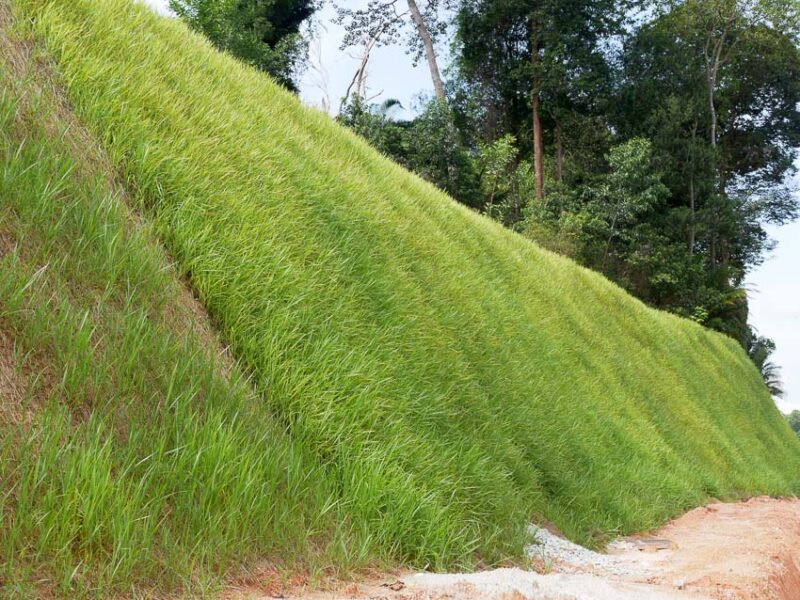
Flat terrains are more accessible to hydroseed than slopes, and slopes require more seed, mulch, and tackifier, so the cost goes up for slopes with over 20 to 25 degrees of incline.
Accessibility of the site
Hydroseeding equipment has a lot of reach. On many hydroseeders, you can connect hoses up to 250 feet, and some spray cannons can reach distances 90 feet past that. However, accessibility of your site may still be an issue and could affect the cost of hydroseeding.
Hydroseeding Equipment and Labor Costs
When hydroseeding, you must factor in the cost of equipment rental if DIYing versus the cost of hiring a professional hydroseeder.
Manual vs. machine application
Planting seed manually costs about $0.04 to $0.20 per square foot, depending on the type of seed you choose and whether you hire someone to do the job.
Machine hydroseeding costs about $0.07 to $0.22 per square foot, plus an additional minimum service charge that can bring the total cost to $0.37 to $0.77 for small yards. For large areas, the cost to hydroseed goes down per square foot, costing between $0.04 and $0.14 per square foot for one acre or more.
Skilled labor charges
Labor rates vary depending on several factors, such as where you live. The hourly rate for skilled hydroseeders is $25 to $30.
Additional Hydroseeding Cost Considerations
Here are some other costs and factors to consider when calculating the hydroseeding cost.
Post-Application Maintenance
After hydroseeding, you have to water and apply fertilizer to the area. Hydroseeded lawns have similar irrigation requirements as traditionally planted lawns. If you plant in the spring, you can take advantage of peak growing conditions and won’t have to water as much.
You should treat hydroseeded lawns every three to four weeks using an 18-24-12 starter fertilizer. After that, you can put them on a regular lawn fertilizing schedule.
Potential Reapplications
There is always the potential for failure when hydroseeding, especially if you apply seed too early or too late in the season.
Reasons for reapplication
Overall, hydroseeding provides excellent results. However, problems caused by erosion and hot, dry weather can reduce the effectiveness of hydroseeding and create the need for reapplication.
Costs associated
The cost of reapplying hydroseeding depends on various factors, including how significant the failure was. Some hydroseeders will guarantee their work under certain conditions, but that’s not always the case.
Hydroseeding Cost by Yard Size
Take a look at the average cost of hydroseeding by yard size, based on the average hydroseeding cost of $0.07 to $0.22 per square foot, plus an additional minimum service charge.
Small Yards (up to 1,000 sq. ft.)
The cost to hydroseed small yards with up to 1,000 square feet of lawn ranges from $70 to $220, plus a minimum service charge of $300 to $500 for setup and travel expenses. The overall cost will range from $370 to $770.
Medium Yards (1,000 – 5,000 sq. ft.)
Medium yards cost about $220 to $1,100 for 1,000 to 5,000 square feet. It will cost $520 to $1,600 to hydroseed a medium-sized yard, including the additional minimum service charge.
Large Yards (Over 5,000 sq. ft.)
Yards over 5,000 square feet will start at $1,600 and can go up from there. If you’re hydroseeding large areas, expect to pay about $2,000 to $6,000 per acre.
What Scenarios are Best for Hydroseeding?
What are the best conditions for hydroseeding? Hydroseeding is best for certain applications, from new lawns to large commercial projects.
New Lawn Installations
Hydroseeding is a reliable way to plant a new lawn or overseed an existing one. New lawn installations are one of the best hydroseeding scenarios because the application is even and will result in a lush, green lawn faster than traditional seeding.
Erosion-Prone Areas
Hydroseeding is an excellent solution for sloped sites where water can easily wash away seeds. To ensure good coverage, your hydroseeder will use more mulch, tackifier, and seeds in the slurry than in flat applications.
Large Commercial Projects
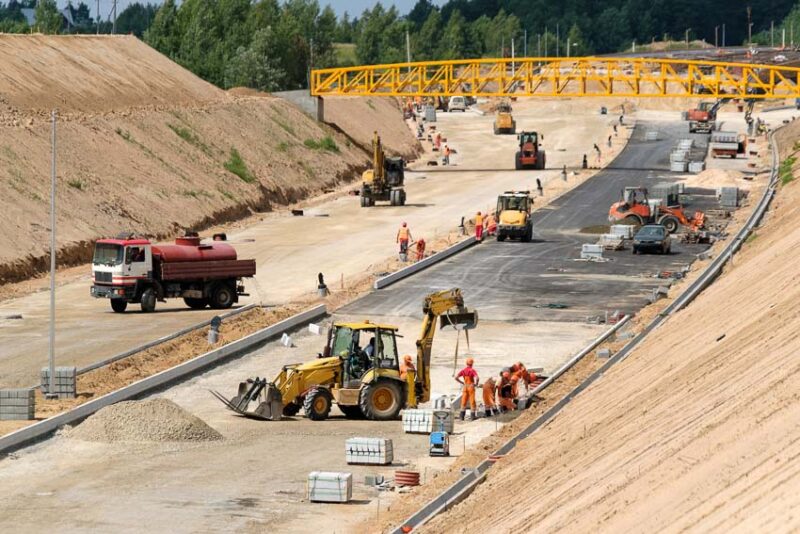
Since hydroseeding provides faster results, people often use it for large commercial projects and road construction. Because the mulch and tackifier keep the seed in place, it’s the best choice for seeding new lawns with automatic sprinkler systems.
DIY Hydroseeding Cost vs. Hiring a Professional
DIY hydroseeding is uncommon, but it’s possible. Consider the equipment and material costs of DIY hydroseeding versus hiring a professional to see if it’s right for you.
DIY Hydroseeding Equipment and Material Costs
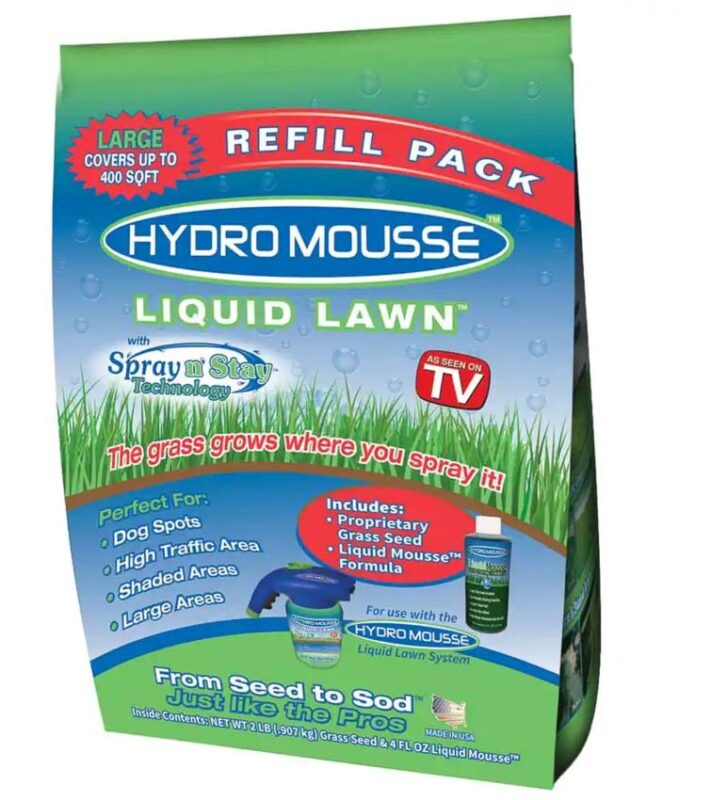
Hydroseeding equipment costs thousands of dollars, so buying the equipment outright is usually cost-prohibitive. Renting it is a viable option, but it costs about $300 to $500 per day.
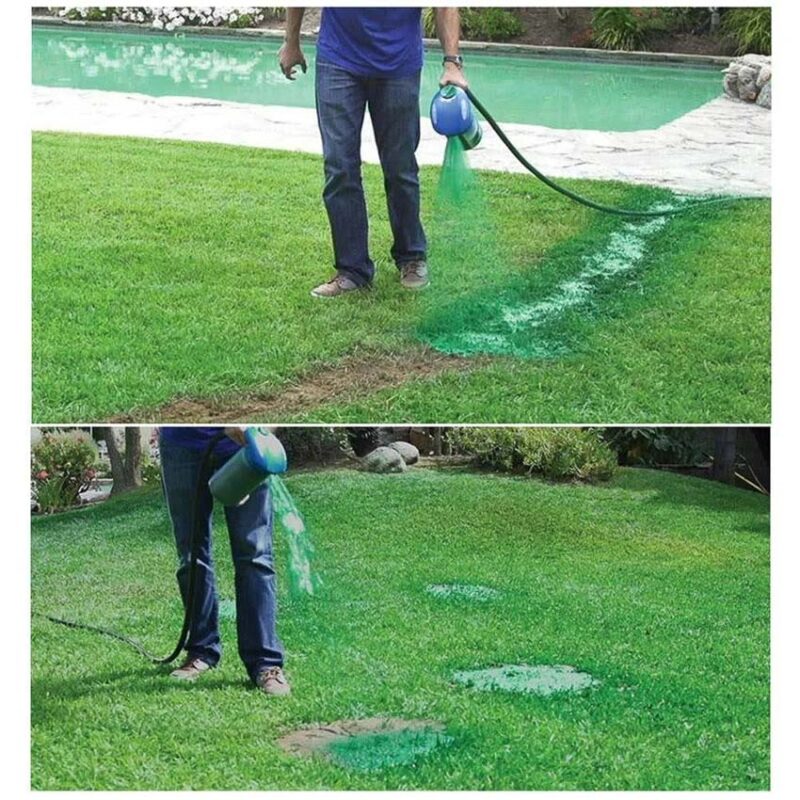
In addition to the equipment, you must purchase the seed, mulch, and additives. You can purchase the materials individually, but the seeds alone cost about $0.20 to $0.50 per square foot.
DIY hydroseeding kits cost about $0.30 per square foot, so they are cost-effective solutions for minor repairs.
Advantages of Professional Services
Hiring professional hydroseeders is much easier than DIYing it, and you get the benefit of their experience and expertise.
Because professional hydroseeding services buy products in bulk, they get price breaks that DIYers don’t. Therefore, they are able to make a profit on the cost of materials without it costing you a lot more.
Hiring a professional also saves you time, and if you’re like many people, that’s just as important as saving money.
How to Save Money on Hydroseeding Costs
Here are some ways to save money on hydroseeding costs.
Optimal season for hydroseeding–You’re less likely to have failures when you hydroseed during peak growing conditions, which can save you money on reapplication.
Bulk purchasing for large projects–The hydroseeding cost per square foot is lower for large projects. If possible, combine your hydroseeding project with your neighbors’.
Regular maintenance to avoid reapplications–Taking care of your newly hydroseeded lawn by watering and fertilizing it will help you avoid reapplication costs.
Exploring local subsidies or programs–Look for programs and subsidies that can help you pay for the costs of hydroseeding, particularly for erosion control or noxious weed removal.
FAQs About Hydroseeding Costs
How soon will I see results from hydroseeding?
Most hydroseeded lawns start to germinate within 5 to 7 days of hydroseeding. Depending on soil temperatures, you may have to wait up to 10 days or 2 weeks to see noticeable growth.
Does hydroseeding work for all types of grass?
Hydroseeding is a method of planting grass. Choose the best grass seed for your climate and region for optimal results.
How often will I need to water after hydroseeding?
How often you need to water after hydroseeding depends on the weather. You should keep the top layer of soil moist, so if it’s not raining, you may need to water two to three times per day.
What are the environmental costs of hydroseeding?
Hydroseeding is non-toxic. Since it helps prevent erosion, it’s an eco-friendly solution to combat the environmental impact of erosion, disturbed soils, and landslides.
Can I mix different types of seeds in one hydroseeding application?
You can use hydroseeding to apply many different seed mixes, including wildflowers, native seeds, and grass mixes. Since native vegetation is often superior for preventing erosion, road construction companies will use native seed mixes containing herbaceous, woody, and grass plants.



